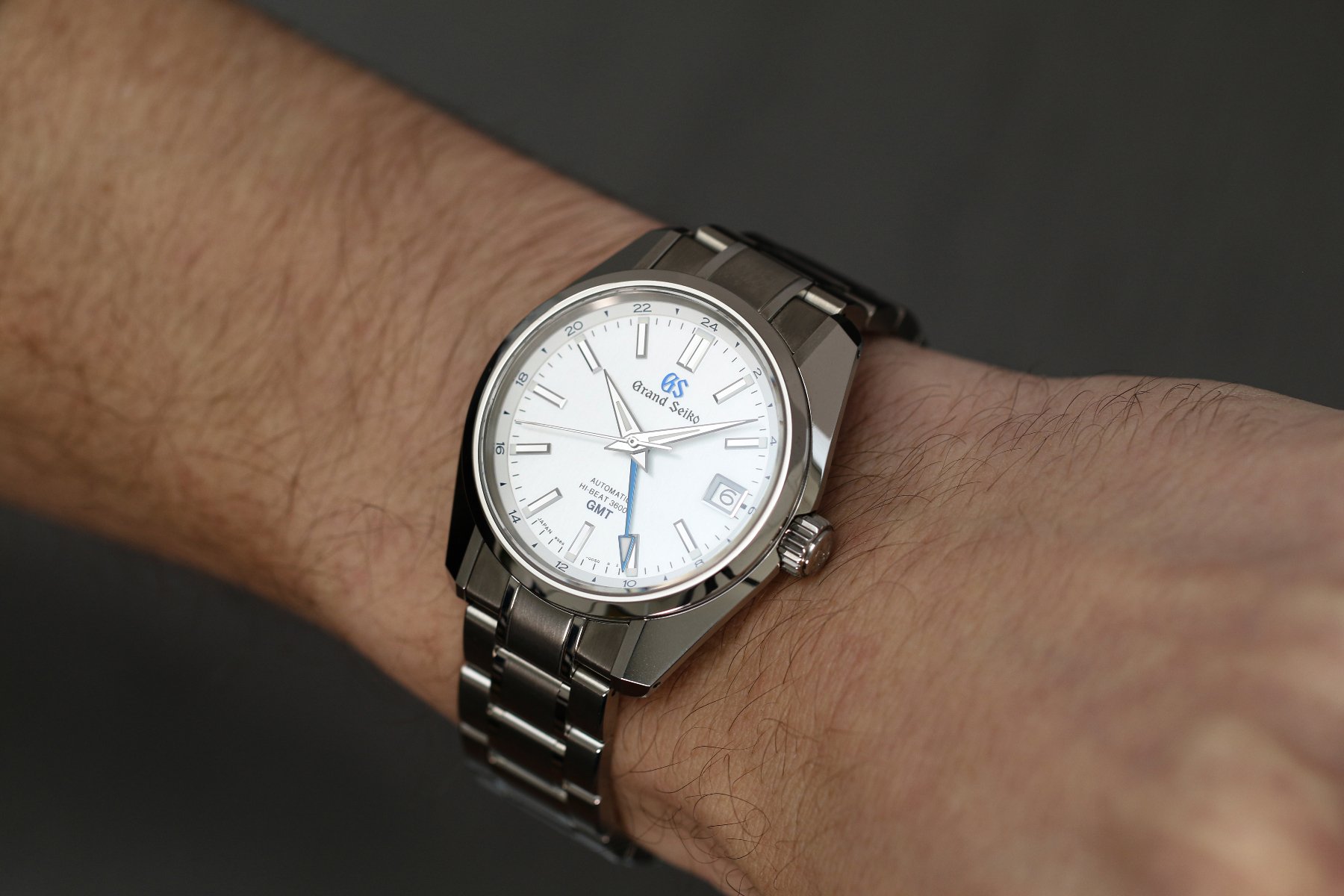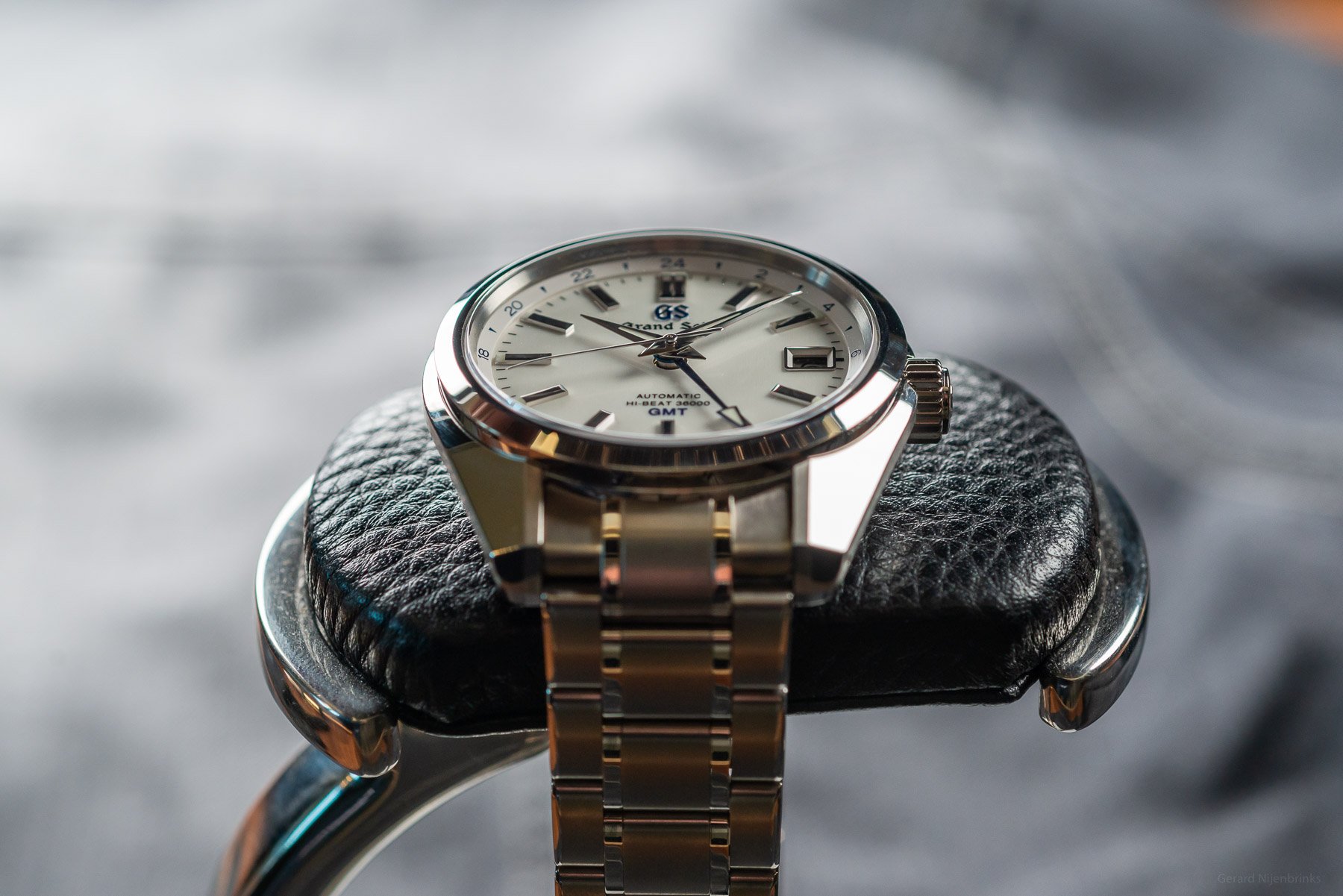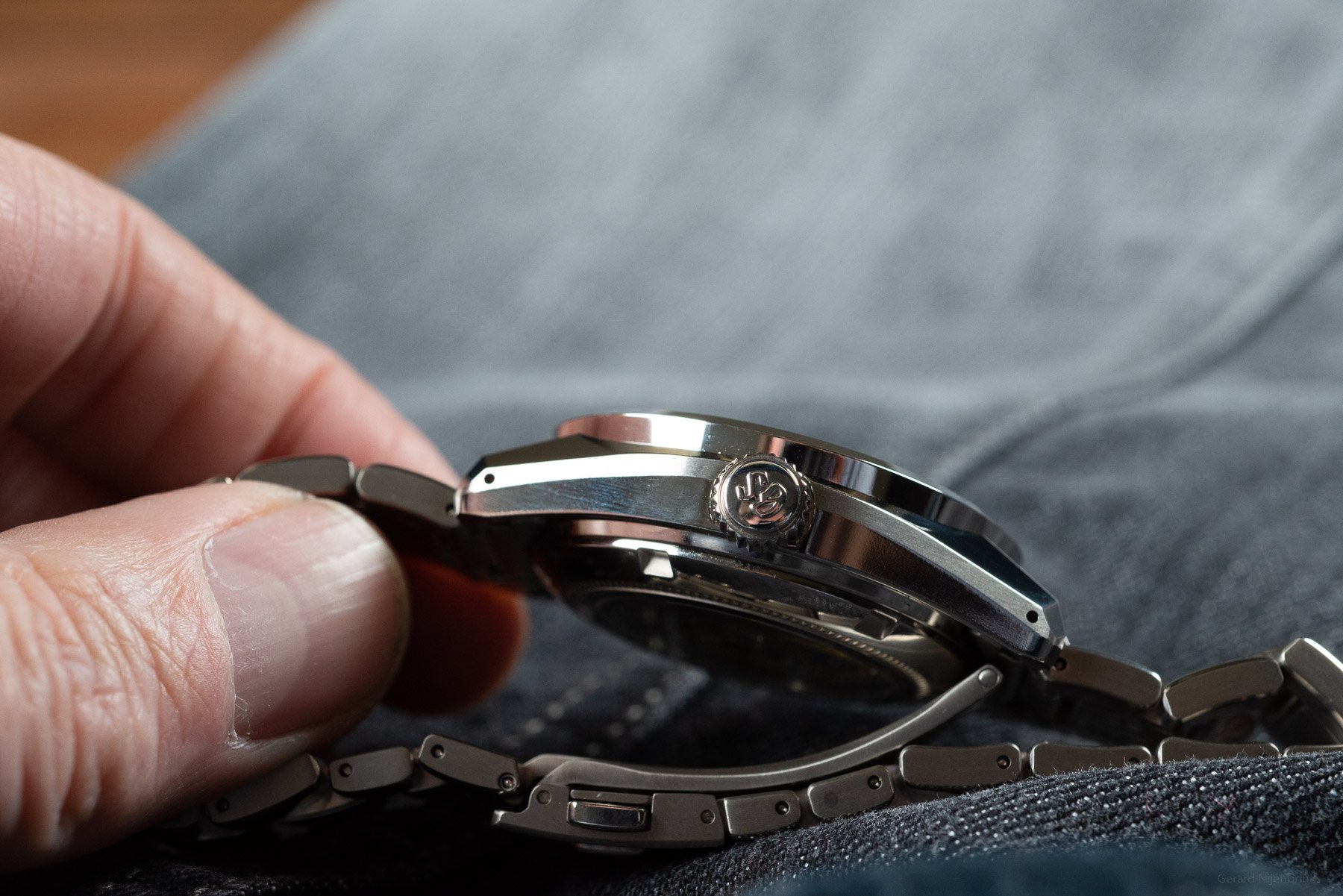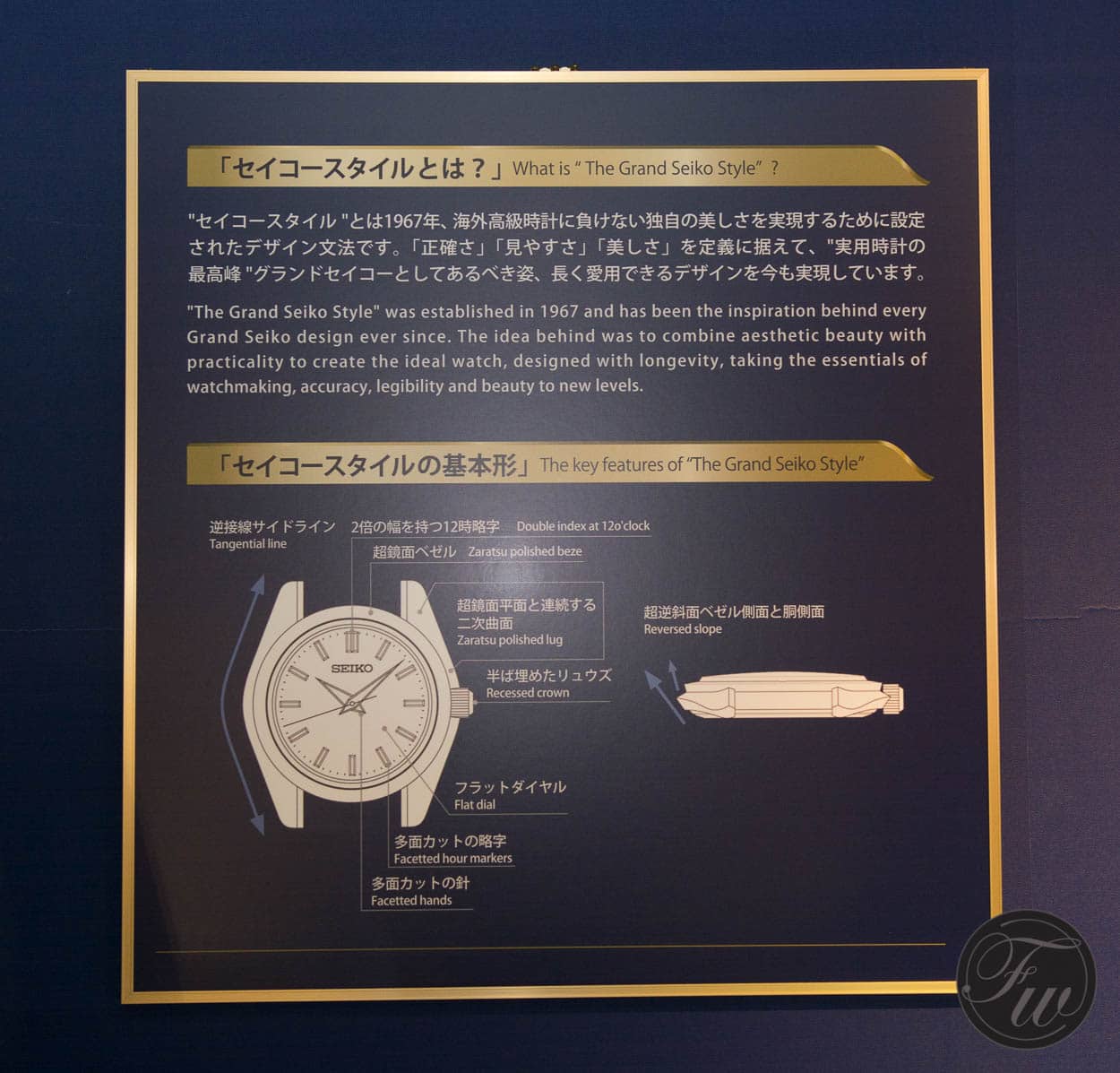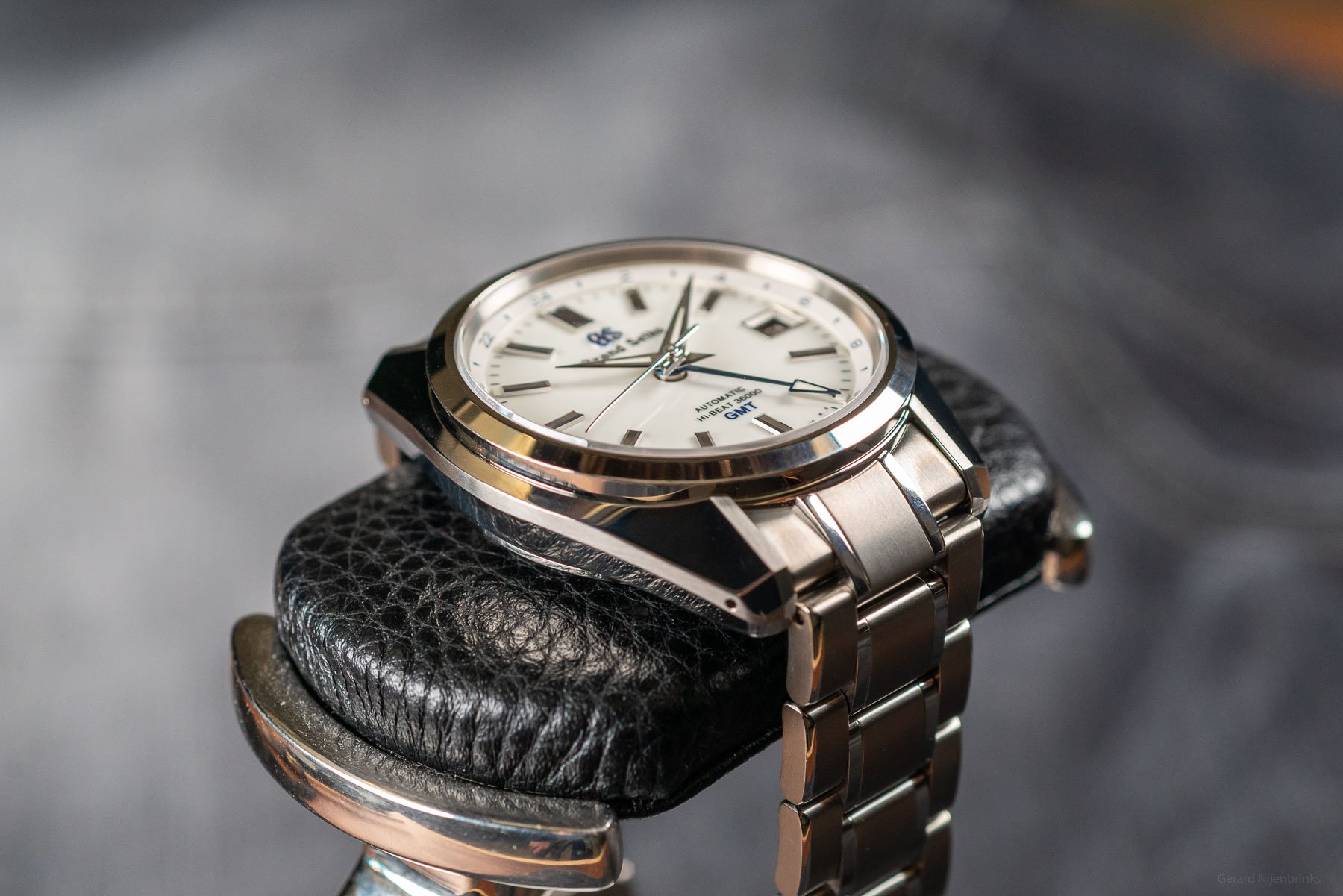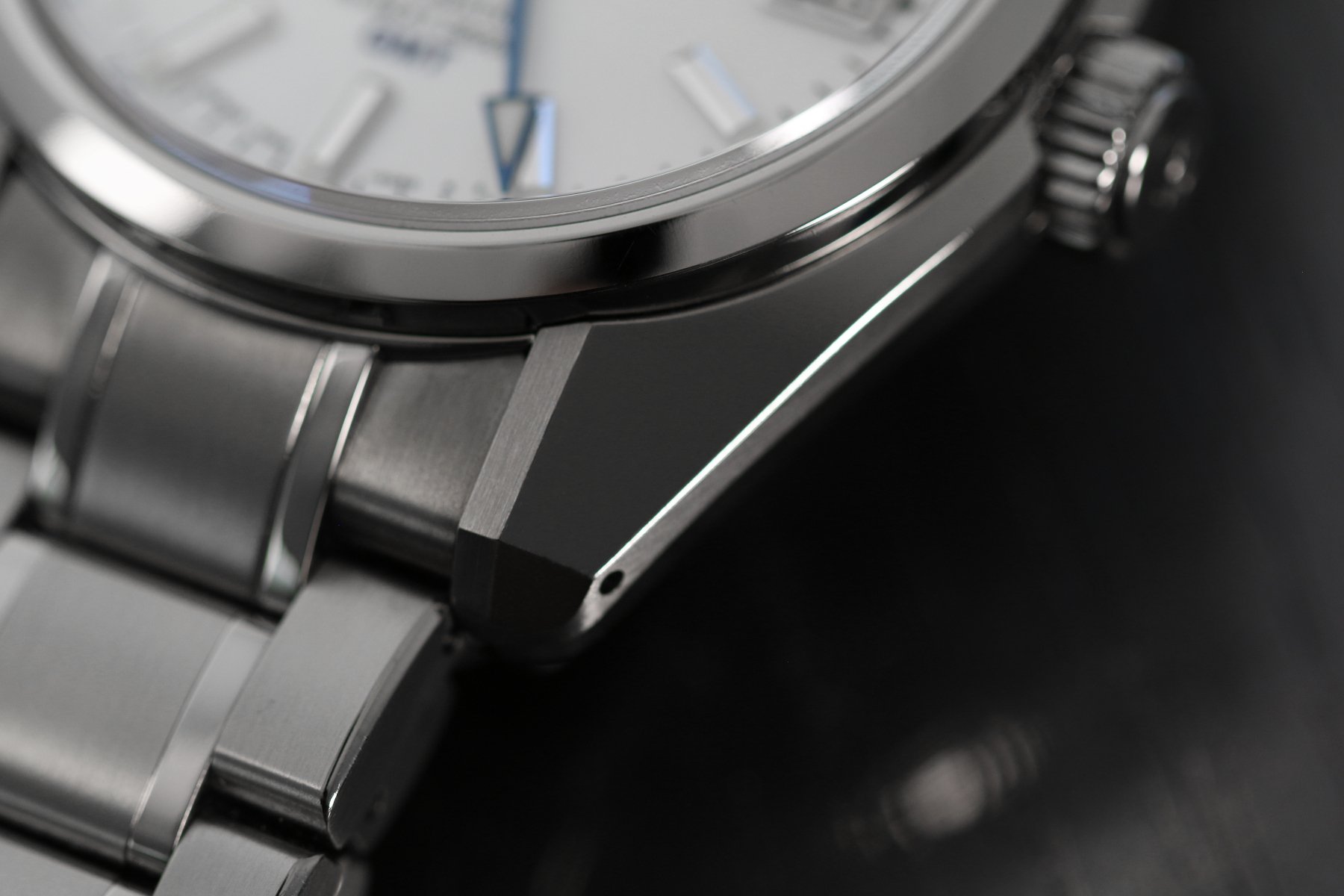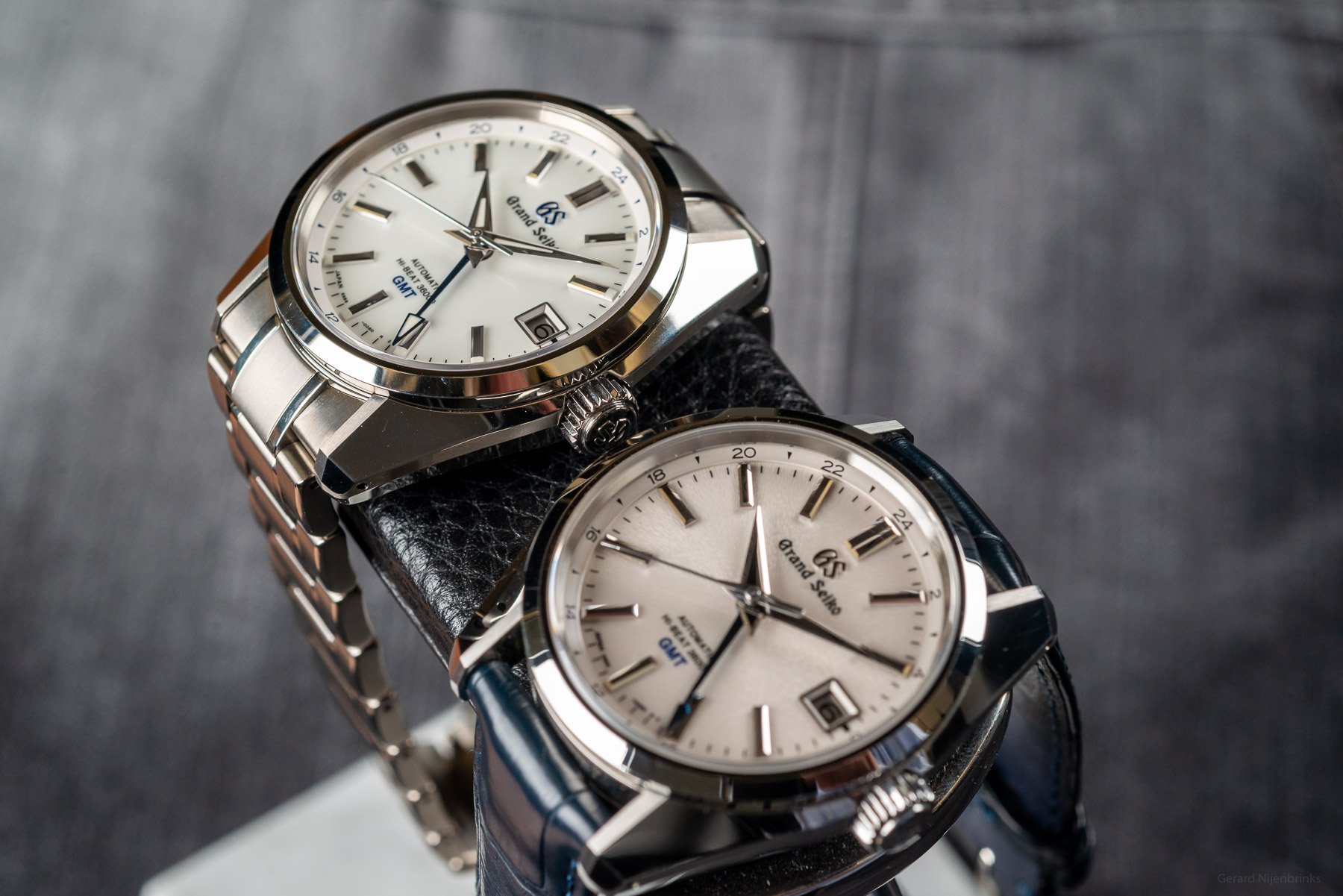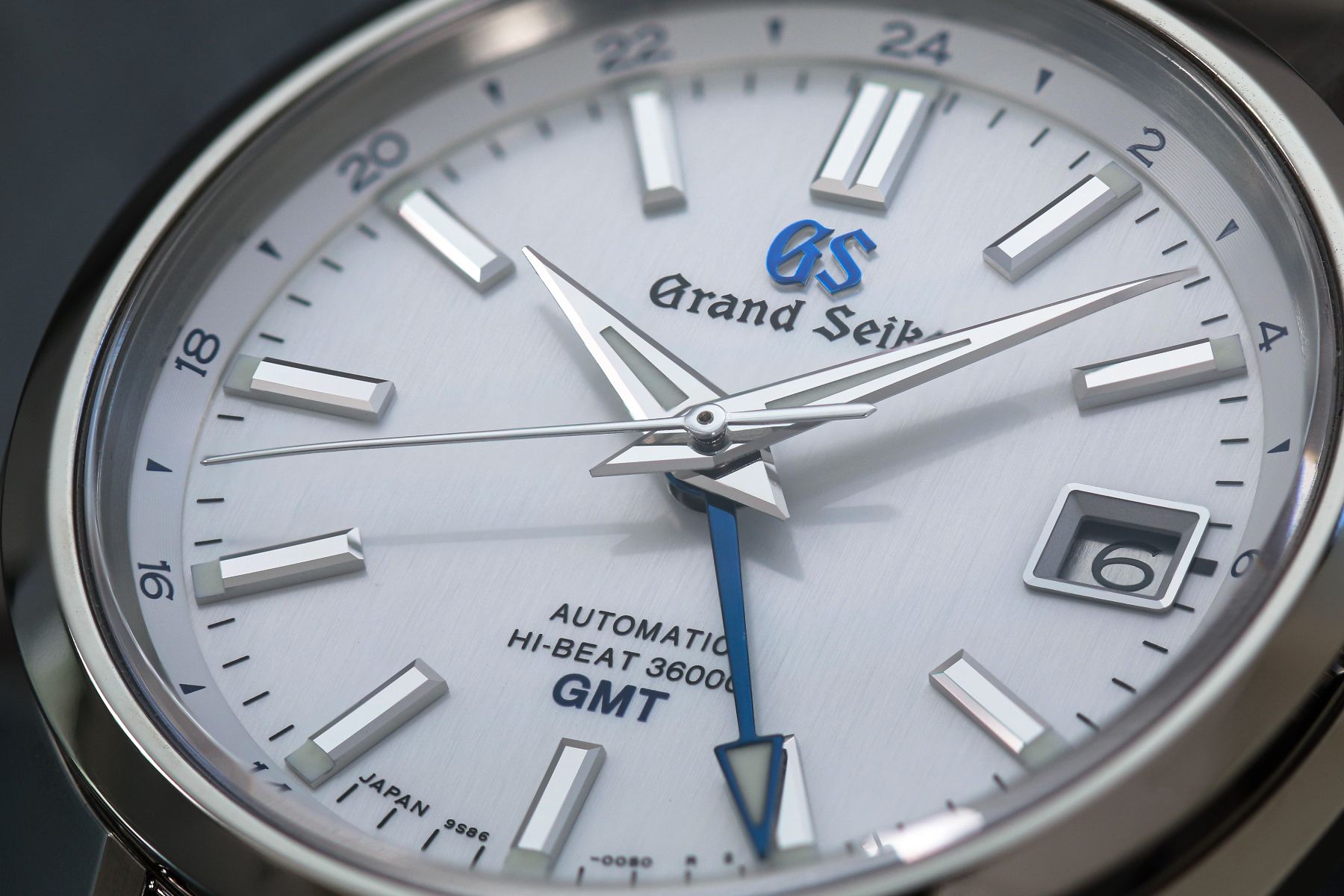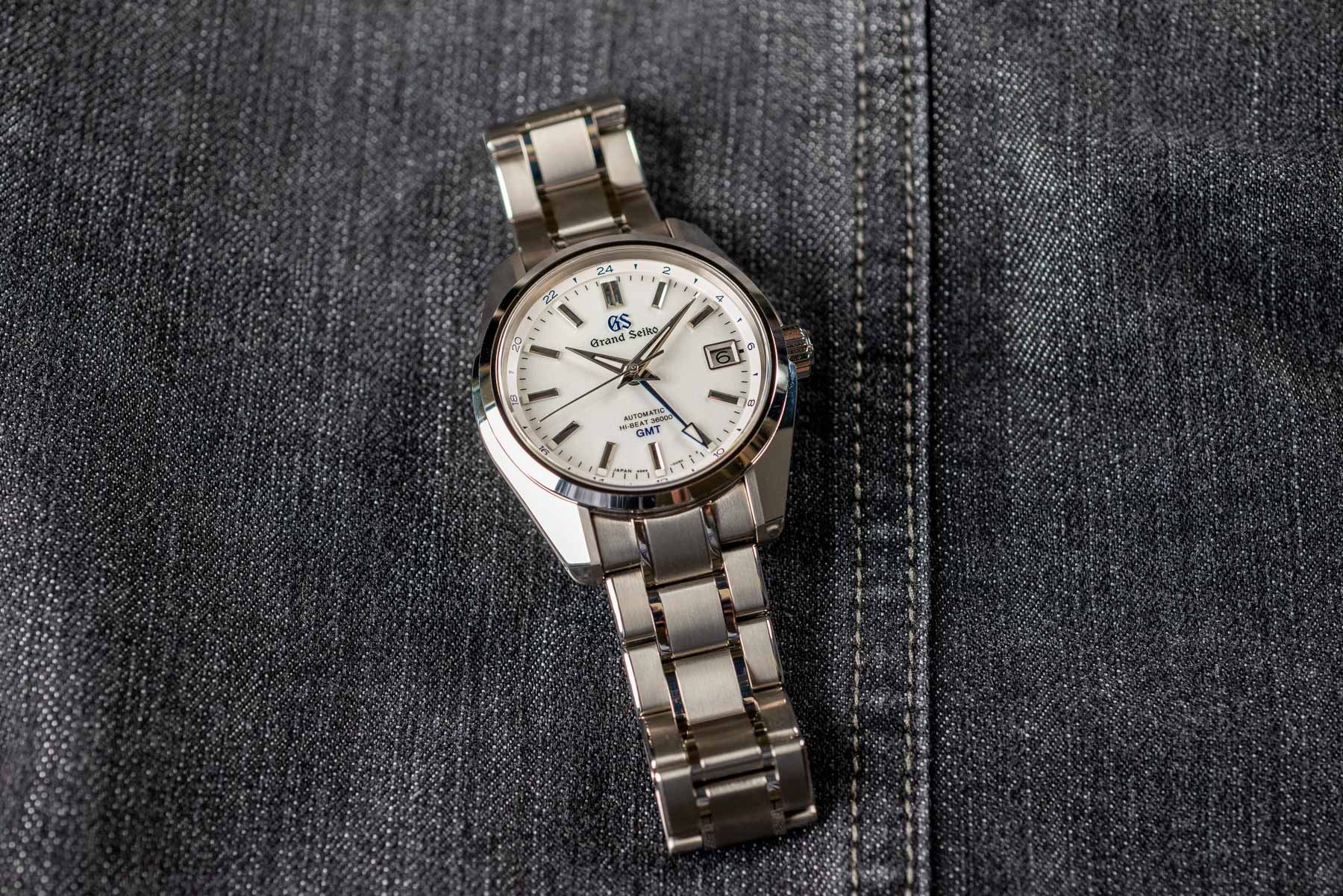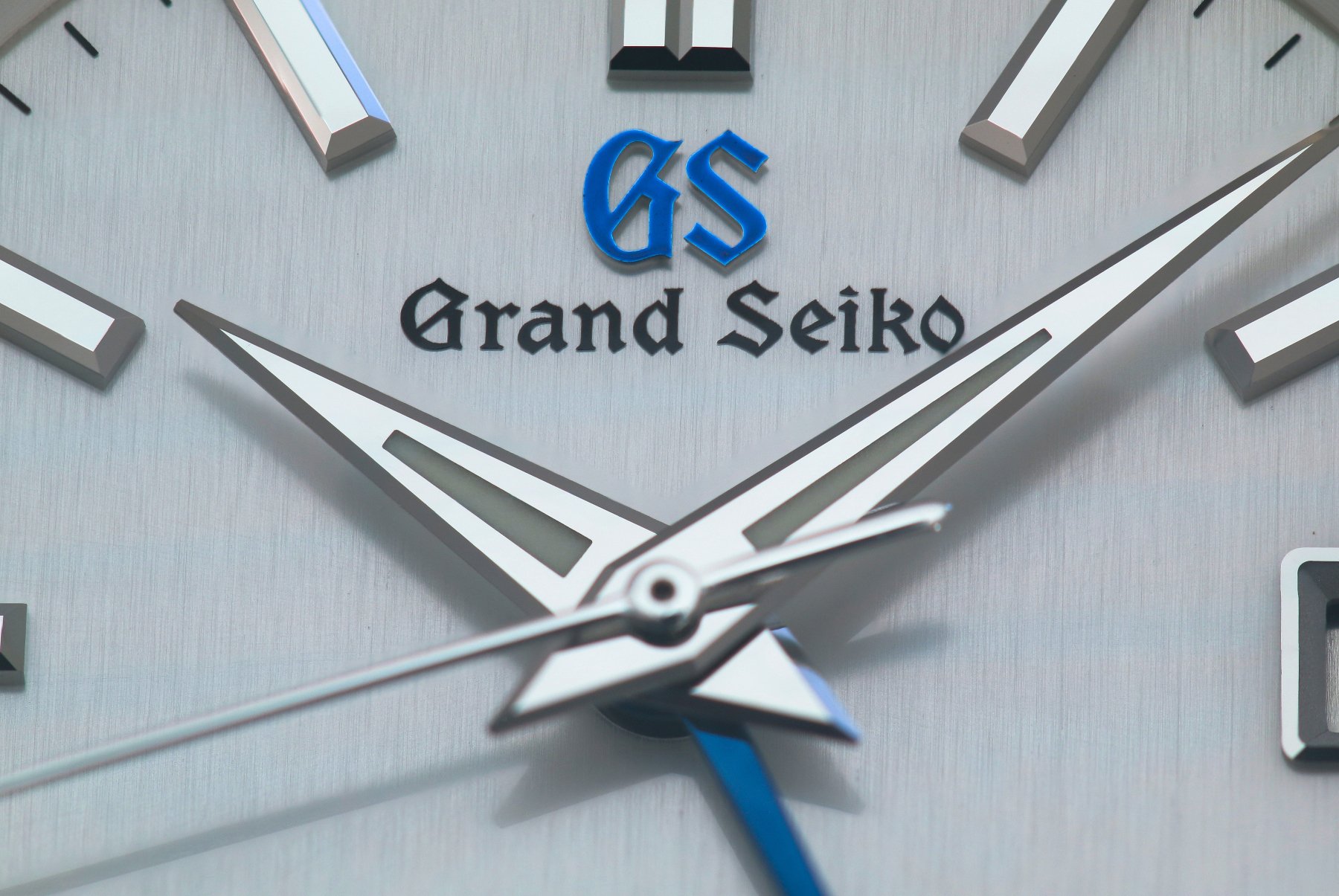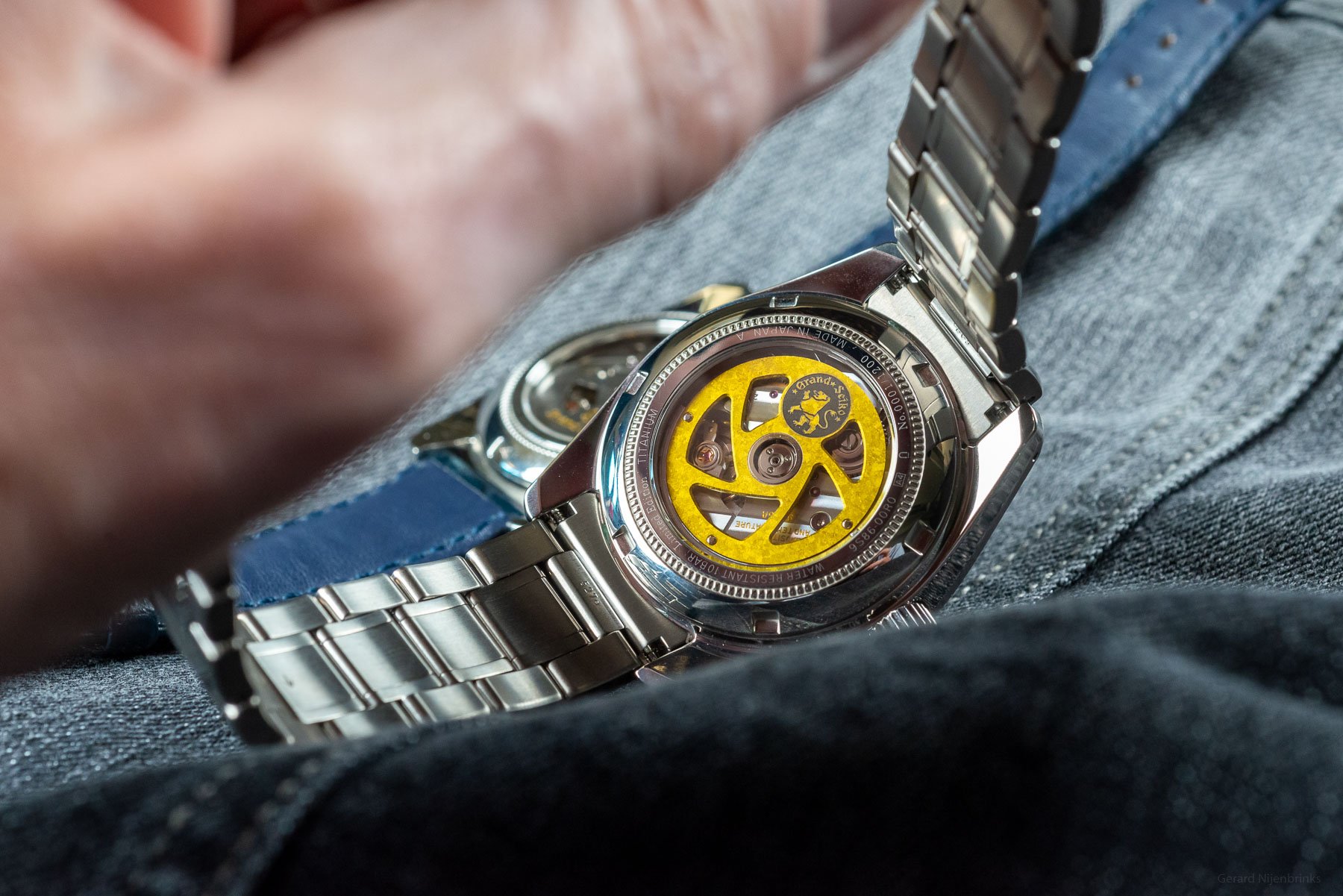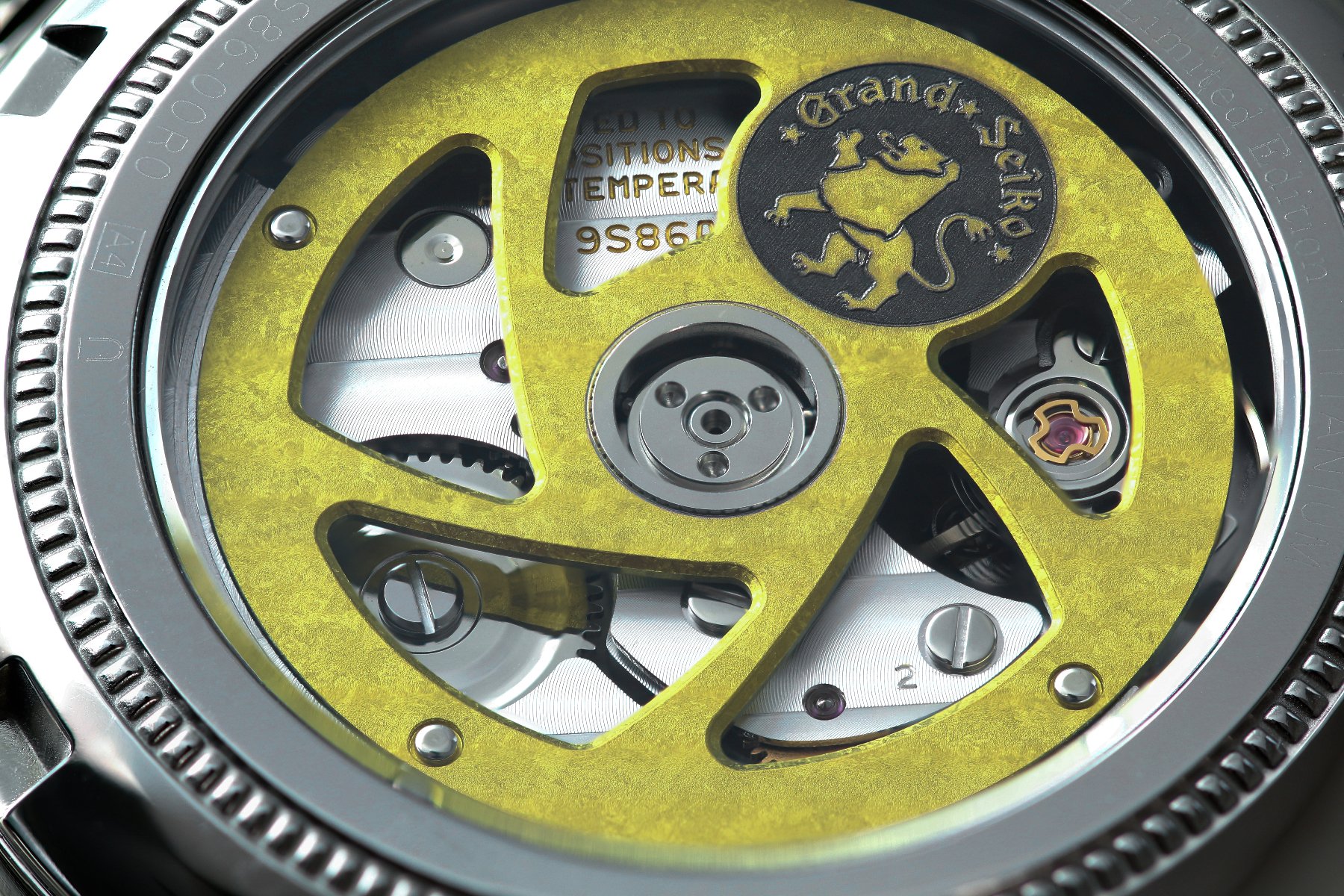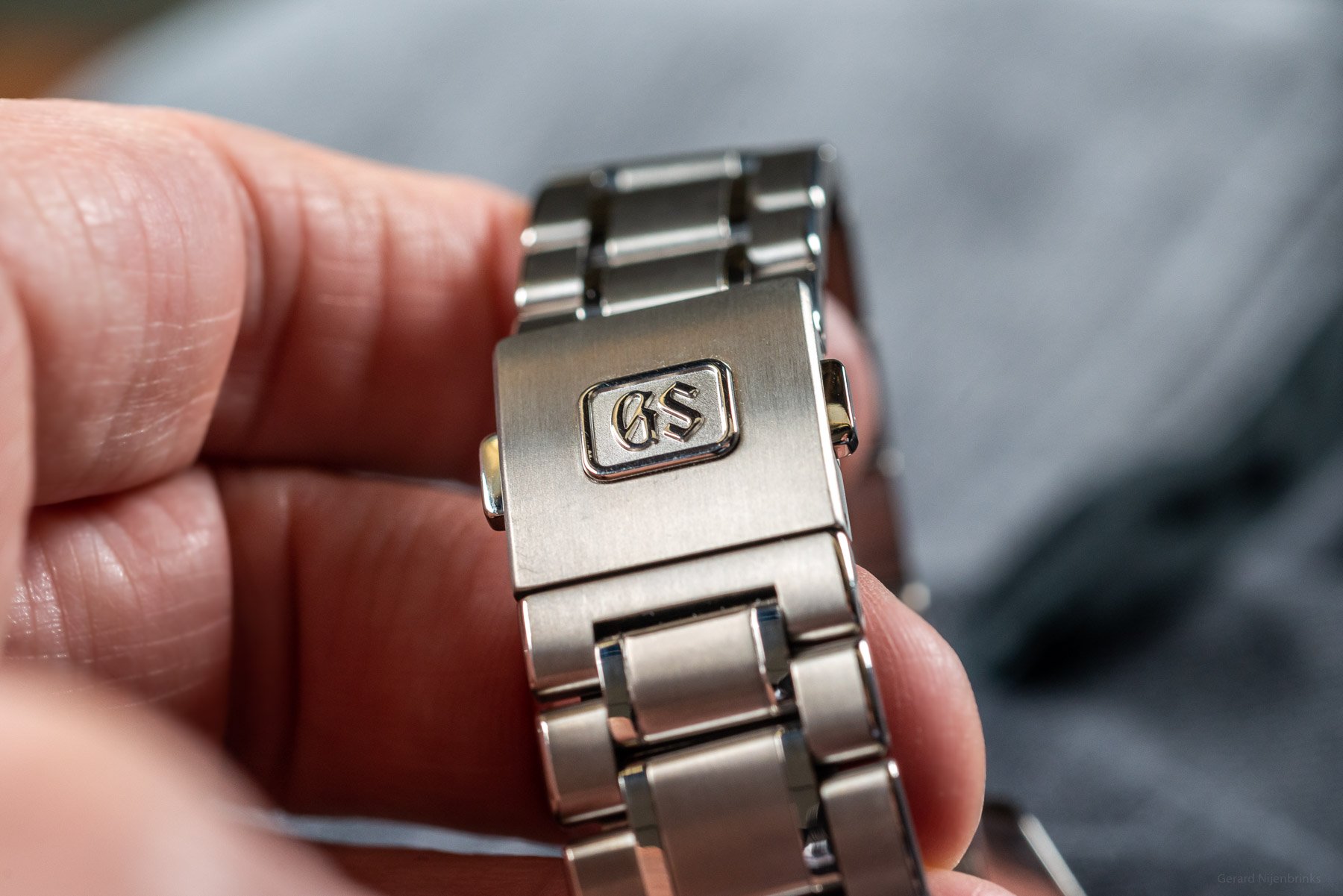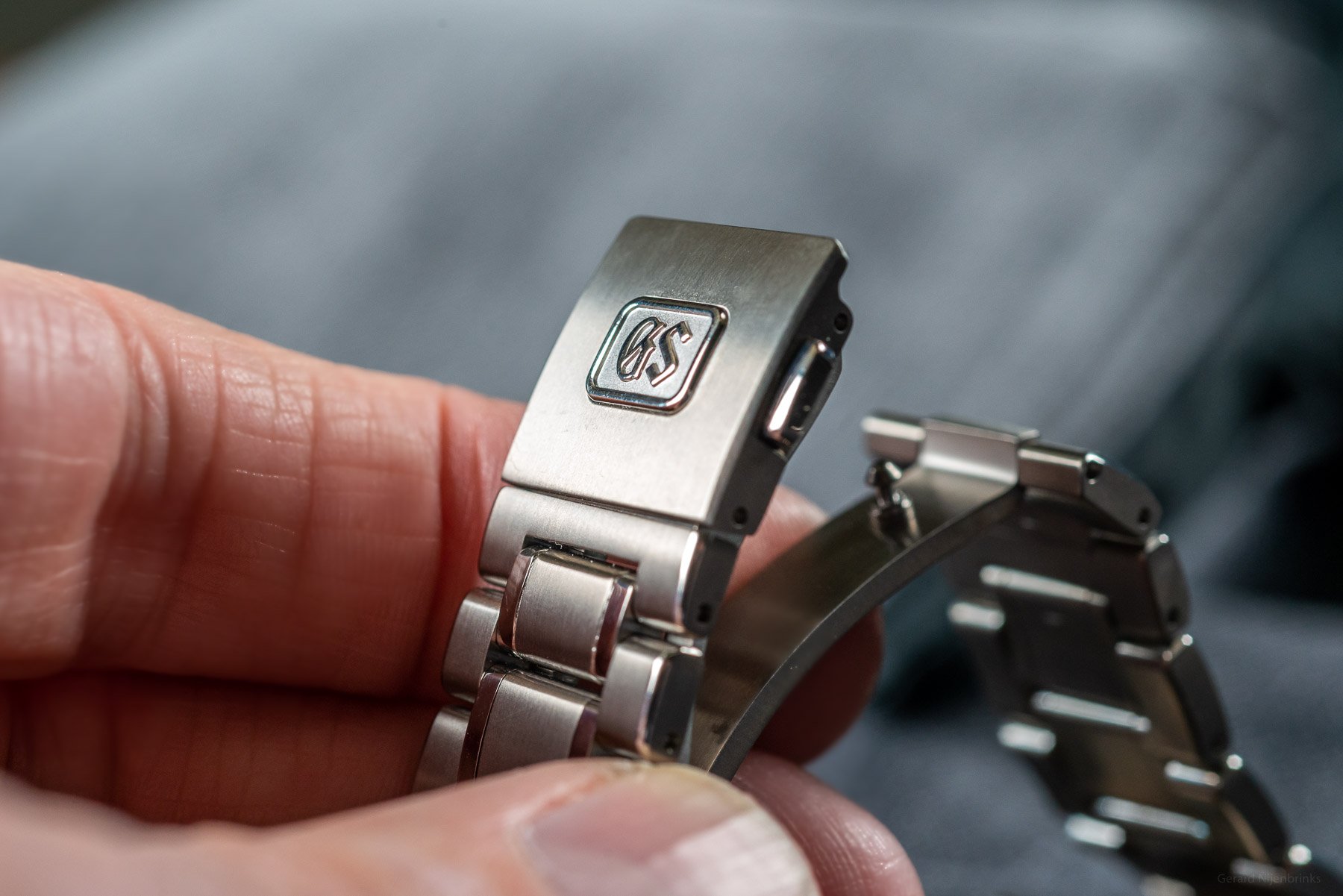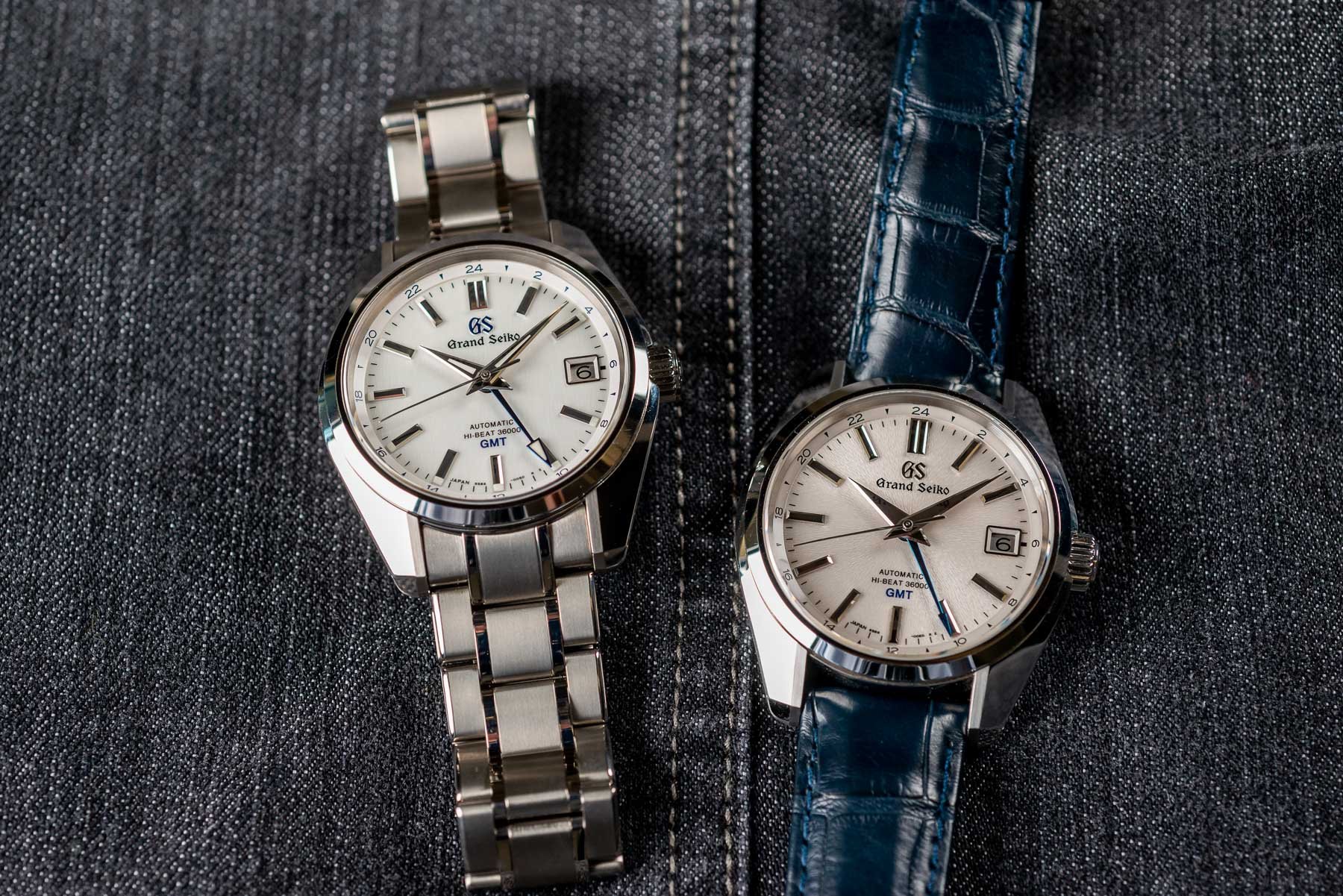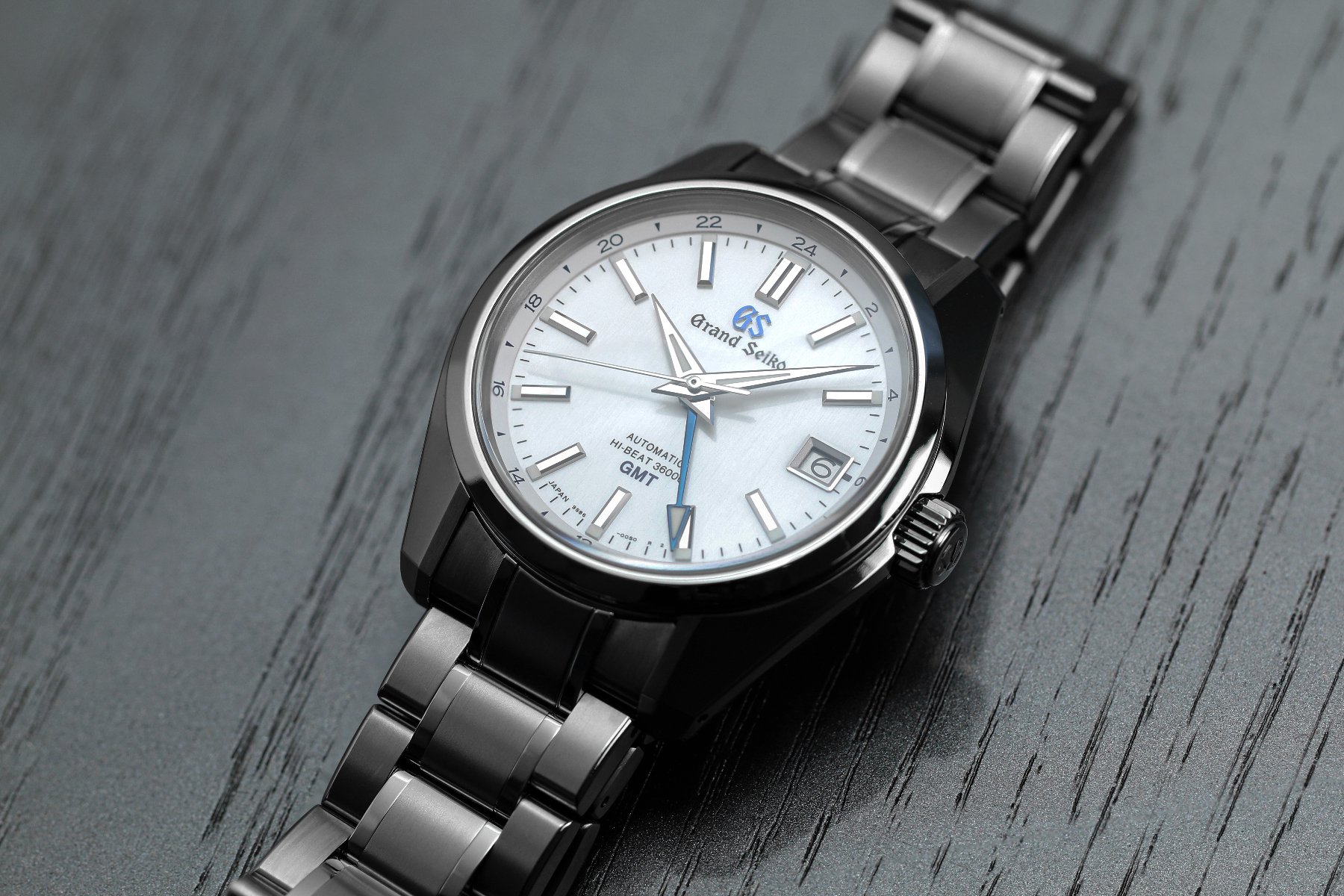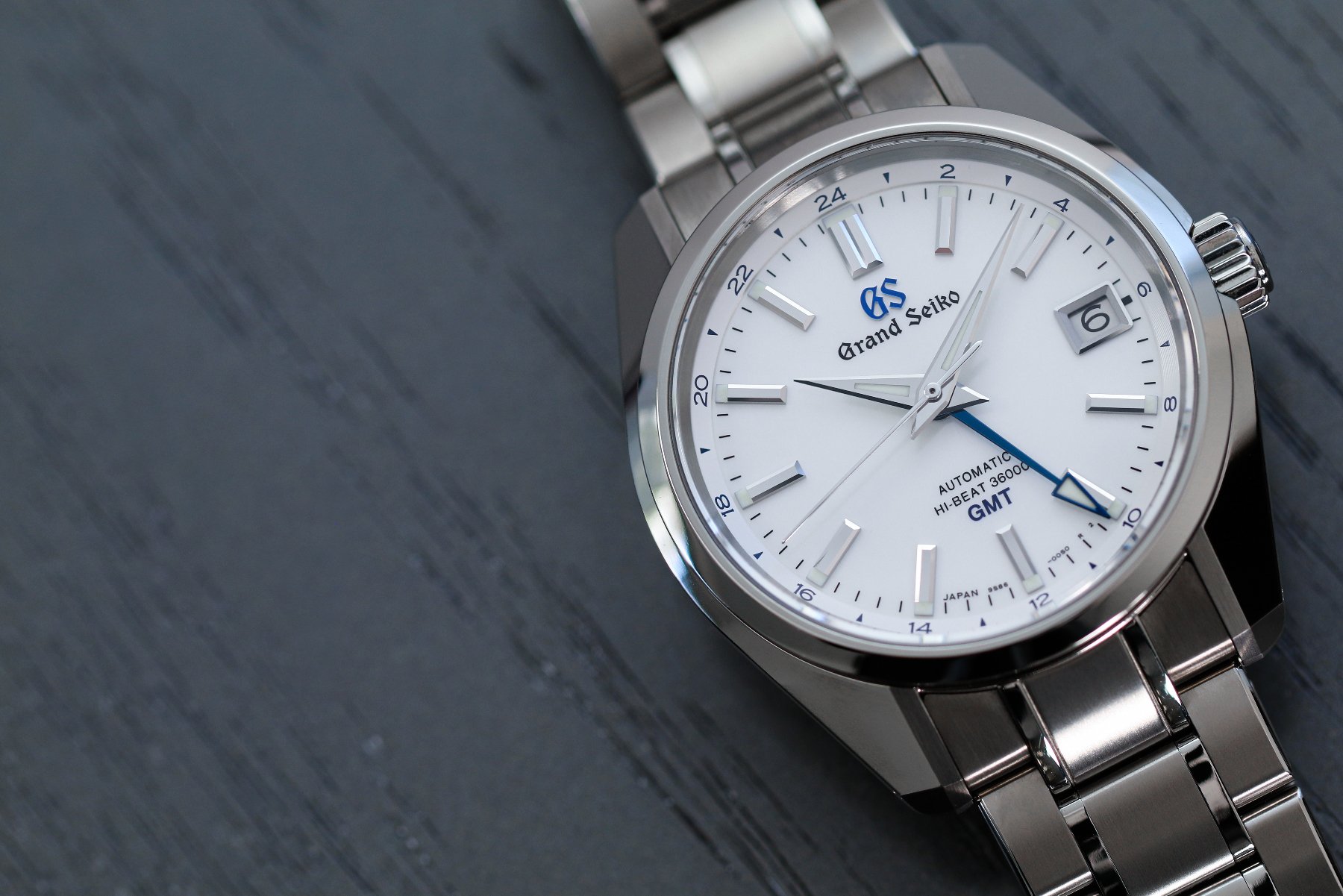Hands-On: The Titanium Grand Seiko SBGJ255 Vs. The Steel SBGJ201
In 2022, Grand Seiko celebrates the 55th anniversary of its famous design language, known as the Grand Seiko Style. This particular style came to life in 1967 with the introduction of the 44GS case. This celebration calls for a limited edition from the Japanese manufacturer. Meet the Grand Seiko SBGJ255, the latest Hi-Beat GMT addition to the brand’s Heritage Collection.
If this watch looks familiar to you, there’s a good reason for that. I had to look twice when the press release came in from Grand Seiko, as it looks a lot like the reference SBGJ201 that I bought back in 2018. Besides taking a closer look at the new Grand Seiko SBGJ255 limited edition, I will also do a side-by-side comparison with its non-limited edition counterpart in stainless steel. There are definitely some differences other than the use of titanium instead of stainless steel.
Grand Seiko Heritage Collection SBGJ255
But first things first. The Grand Seiko Hi-Beat GMT SBGJ255 has a 40mm diameter case with the typical Zaratsu-polished surfaces. It’s sometimes referred to as a 44GS case, but in fact, it is not identical to the original 1967 44GS case. Therefore, it is better to refer to it as a 44GS-style case. I had to learn that the hard way, as I loosely referred to my own SBGJ201 as a 44GS case. That resulted in some angry comments and a bunch of direct messages on Instagram telling me I was so wrong. There’s nothing wrong with a bit of fanaticism, so I am happy to learn. From then on, I’ve referred to it as a 44GS-style case.
Grand Seiko Style
As I wrote in the introduction of this article, Grand Seiko refers to this design language as the “Grand Seiko Style” in English (though, interestingly, the brand calls it just “Seiko Style” in Japanese). It is also known as the “Grammar of Design”. The founder of this design language is Taro Tanaka, who started his career with Seiko in 1959. His ground rules for Grand Seiko’s design formula were first used for the 44GS case, which was produced in the Daini Seikosha factory in 1967. There are basically three principles to this design: 1) When possible, surfaces should be flat. 2) The flat surfaces should be as wide as possible. 3) The surface should be free of distortion.
Sallaz polishing machines
To ensure the case has distortion-free surfaces, the Sallaz polishing machines come into play. The mirror blade-polishing technique achieved by these machines is referred to as the famous Zaratsu polishing. The word “Zaratsu” is basically the Japanese phonetic representation of the name Sallaz, the maker of the polishing machines that Grand Seiko uses.
The titanium 44GS-style case
The 44GS-style case used for the SBGJ255 (and for various other Grand Seiko watches) is something truly unique. For me, it was the reason to buy my Grand Seiko SBGJ201 after I had been contemplating buying a Grand Seiko SBGA211 “Snowflake” for quite a while. Now, titanium is not my favorite material for a watch, but even if the SBGJ201 had been titanium, I would have preferred it over the Snowflake. That’s just because of that beautiful 44GS-style case design.
The case of the SBGJ255 has the same dimensions as the SBGJ201 — a diameter of exactly 40mm, a thickness of 14mm, and a lug-to-lug size of 46.2mm. What is different, of course, is the weight. It only weighs 107 grams, while the steel SBGJ201 has a weight of 159 grams, both with all links installed in the bracelet. That is quite a reduction!
Grand Seiko SBGJ255 dial
The dial is always one of the main attractions of a Grand Seiko, or at least it is to many of us Grand Seiko enthusiasts. And that’s also the case for the new SBGJ255. Whereas the dial of the SBGJ201 “Mt. Iwate” doesn’t require much effort to recognize the texture, the motif on the SBGJ255 is a bit tougher to see. Let me explain. In some of the images, the dial of the SBGJ255 just looks silvery-white, with no identifiable motif at first glance. But upon closer inspection, you will see that it looks a lot like the European Limited Edition that Grand Seiko introduced a few months ago, the SBGW267 that I mentioned in this article.
The dial is inspired by shōji, a moveable paper screen that is placed where it can diffuse light to maximum artistic effect. Although I also need to bring the SBGJ201 a bit closer to my eyes to fully enjoy the Mt. Iwate texture, I can still see there’s a motif on the dial when I hold it a bit further away. Compared to the SBGJ201 “Mt. Iwate”, the dial of the SBGJ255 is a bit more colorful with its blue GS logo, and it looks great.
Lumed hands and hour markers!
What I found interesting about the SBGJ255 is that the hands and dial have an application of lume. As you probably know, Grand Seiko applies LumiBrite, its own luminescent mix, to the hands and indexes. I never missed lume on my Grand Seiko SBGJ201, as the beautifully polished hands and hour markers, with multiple facets, catch even the slightest bit of light. This enables you to tell the time in low-light environments.
For this new limited edition reference, Grand Seiko decided it was time to lume up. In my opinion, it didn’t ruin the design of the hands or the dial at all. It’s just different.
Caliber 9S86
Inside the SBGJ255, just like the SBG201, is Grand Seiko’s 9S86 movement. It’s a hi-beat caliber with a real GMT function, meaning you independently set the hour hand to the local time zone. The GMT hand will just rotate accordingly when you set the time (minutes, hours, etc). It is a beautiful movement, ticking at 36,000vph, showing you a smoothly gliding seconds hand on the dial. For this limited edition SBGJ255, the rotor has received a special decoration. Or, more accurately, Grand Seiko installed a completely different rotor.
The oscillating weight received a special treatment to get this gold tone. It’s an anodic oxidation process that results in the metal getting an oxide film. According to Grand Seiko, titanium oxide film generates color according to the light refraction index. By varying the thickness of this film, you can produce different colors. It looks neat, although it does block the view of the mechanical movement. Through the skeletonized rotor, you can see parts of the decorated caliber 9S86 though.
The bracelet
The Grand Seiko bracelet on this 55th-anniversary limited edition is similar to the stainless steel ones used for many other GS watches. It is sturdy, comfortable, and has a folding clasp with release pushers. I always thought I wasn’t a fan of the polished intermediate links, but after wearing the new range of Grand Seiko watches like the White Birch and SLA007, for example, I discovered that I miss a bit of that shine on those bracelets.
Nevertheless, I would definitely wear this new Grand Seiko on a strap, as I do mine. In my opinion, that helps the 44GS-style case become more apparent and the star of the show on the wrist. When worn on a bracelet, the watch and bracelet become one, so to speak. But when worn on a strap, there’s no escape from seeing the beautiful surfaces of the 44GS-style case.
But that is, of course, something you need to decide for yourself. And even if the strap was an optional feature, I would go for the bracelet version anyway and buy a separate (custom) strap for it.
Final thoughts
Limited to only 1200 pieces, the SBGJ255 will probably not be around for very long. It will become available as of January 2022, which is either starting tomorrow or has already started when you read this. It has a retail price of €8,500 / $8,500 USD. The use of Grand Seiko’s special high-intensity titanium, with a scratch-resistant and corrosion-free finish, and the special rotor are partly responsible for the increase in price compared to the €6,500 / $ 6,300 USD retail cost of the SBGJ201.
The 44GS-style case design is something worth celebrating for sure, as it is — again in my opinion — one of the most beautiful case shapes ever made. It’s incredibly tough to photograph and even on the wrist, I find it sometimes hard to “capture” it. That is also a reason why I’ve put it on a strap, to just highlight the magnificent work by the aforementioned Taro Tanaka. I hope Grand Seiko will keep using this case in many more models to come so that there will be many more beautiful watches to choose from.
Find more information on the Grand Seiko website.
Follow me on Instagram @rjbroer

